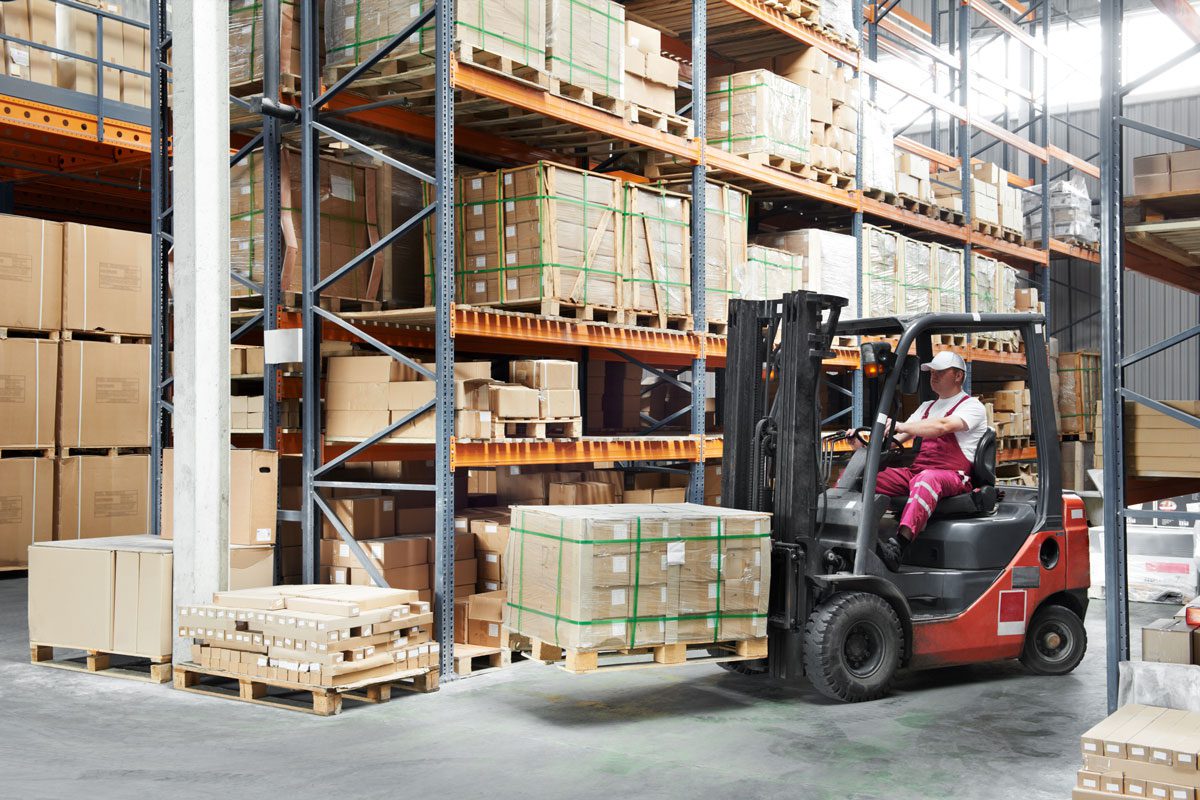The Seven Most Common Types of Pallet Rack Systems

If you have a warehouse, you know the importance and challenge of maximizing your storage space and keeping it organized. Enter pallet rack systems. Designed for warehouse floors of all kinds, with options as diverse as your business, it can be a challenge to decide which systems are best for you. So, we’ve created a list of the most common types of pallet rack to help you find which rack best fits your needs.
Cantilever
Cantilever rackings consists of freestanding racks with easy front load access. Ideal for storing long and bulky products like timber, plastic piping, and steel rods. This system is often found in businesses such as hardware stores, lumber yards, and plumbing supply warehouses.
Drive-In
Drive-in racking is a popular and affordable option that provides efficient space and storage capabilities. Often used for like products that are not time-sensitive, this system is built with aisles in between enabling forklifts to make their way through for convenient and accessible stocking.
Pallet Flow
Pallet flow (also known as gravity flow) racking is all about moving inventory in and out faster. Loads are stored at the higher end and removed at the lower end point, employing the first-in/first-out loading system. It’s easy to manage and it works well with clothing and perishable items.
Carton Flow
Most popular among warehouses with high volume order picking, carton flow racking offers great storage for inventories that operate by first-in/first-out management. It uses a gravity feed rear-load design, which helps in optimising inventory management and operation.
Pick Module
Pick modules are a very broad category of storage system. They support order fulfilment by handpicking. Most pick modules are multilevel structures with narrow walking aisles on the interior and forklift access on the exterior for product replenishment.
Push Back
Constructed in structural or roll form, push back racking is best for efficient storage while enabling inventory rotation. Using the last-in/first-out method, it helps increase the visibility of products and allows for specific selection of inventory items.
Selective
Last but not least, the most used and easily installed system, selective racking. Selective racking allows pallets to be accessed from the structure’s aisle—with beams, providing a pallet support structure. Selective racking systems take up the least amount of space and can be configured to almost any size to fit your business.
Explore Recent Resources
- Maximize Warehouse Efficiency with Drive-in Systems
- Enhancing Efficiency and Productivity: The Benefits of Pallet Flow Racking Systems in a Warehouse Environment
- Introducing LJS Solutions: Your One-Stop OEM Support Partner for Production Line Parts
- The Benefits of Display Lighting in Visual Merchandising
- Enhance Retail Success: Incorporating Point-of-Purchase Displays
- Exploring the Advantages of Cantilever Racking Systems
- Incorporating Ergonomics into Conveyor Systems Enhancing Efficiency and Worker Safety
- The Advantages of Rack-Supported Buildings
- Pallet Rack Moving Systems
- Overloaded Beams Pose Safety Hazard
